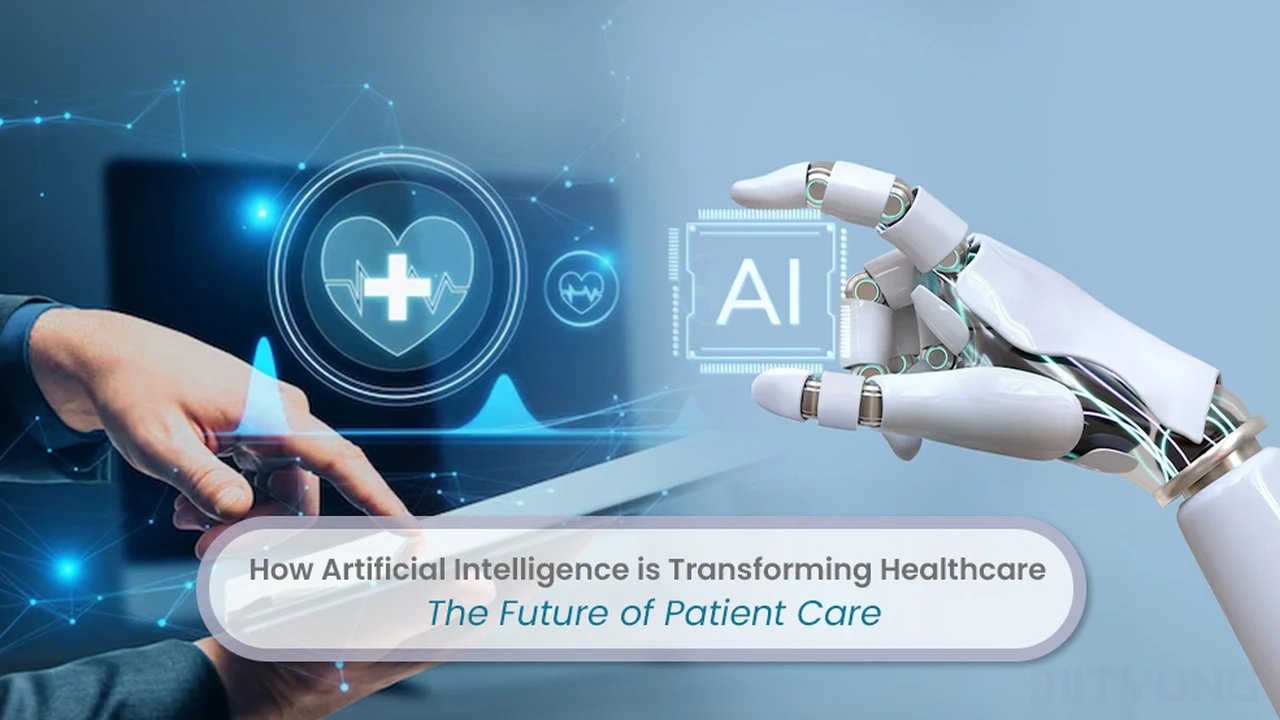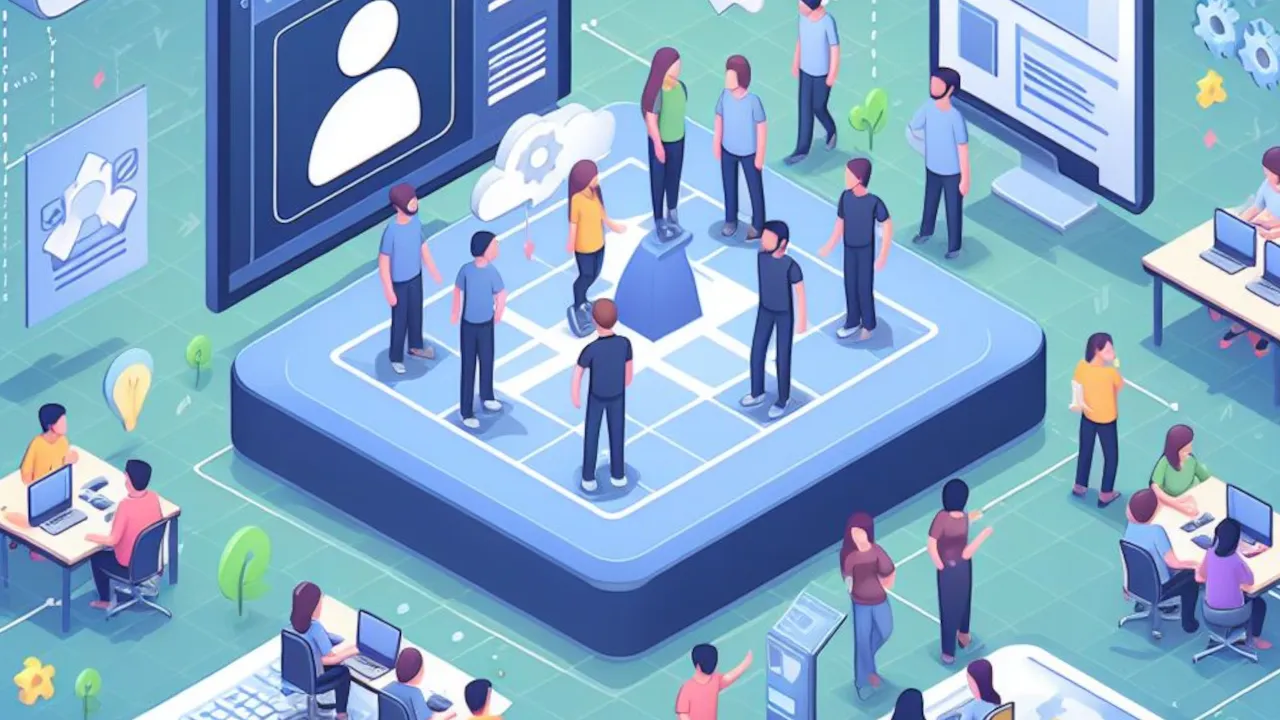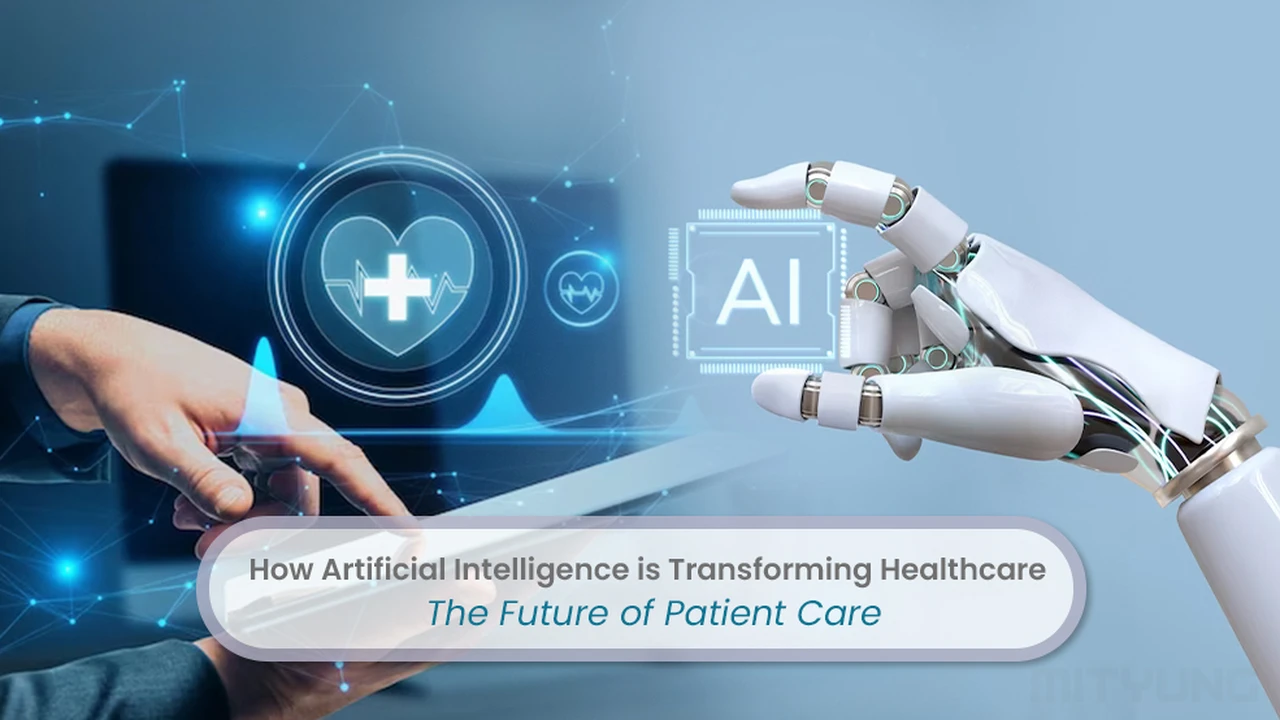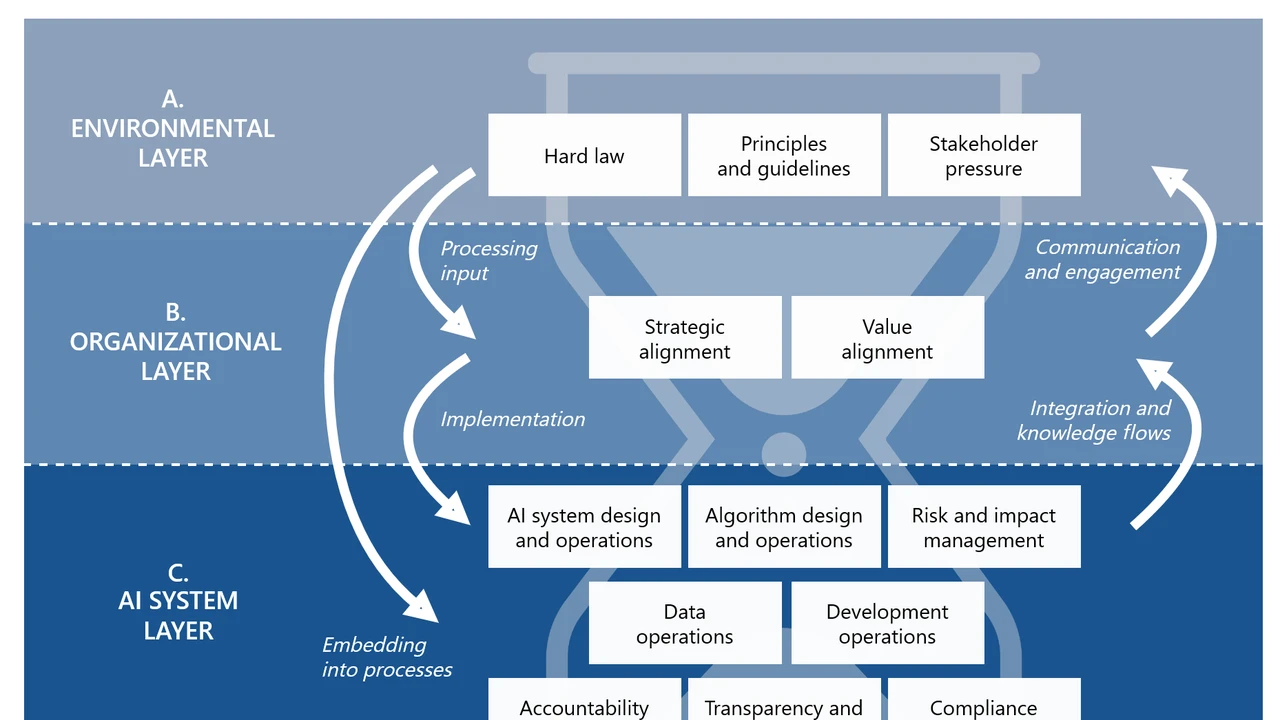AI and Sustainable Development Goals: Achieving a Better Future
Explore how AI is driving innovation in healthcare and transforming patient care. This article discusses the latest AI applications in healthcare. Discover the future of medicine with AI.

AI in Diagnostics Enhancing Accuracy and Speed
Okay, let's dive into how AI is seriously shaking things up in healthcare diagnostics. Forget the old days of waiting ages for results and dealing with potential human errors. AI is stepping in to make everything faster, more accurate, and, frankly, way more efficient. Think about it: AI algorithms can analyze medical images like X-rays, MRIs, and CT scans with incredible precision, often spotting things that might be missed by the human eye. This isn't about replacing doctors; it's about giving them super-powered tools to make better decisions.
AI-Powered Medical Imaging Tools A Deep Dive
So, what kind of tools are we talking about? Well, there are a bunch of cool ones. For example, there are AI systems that can automatically detect tumors in radiology images, helping radiologists prioritize cases and reduce diagnostic delays. Then there are AI algorithms that can analyze genomic data to identify genetic markers associated with specific diseases, allowing for earlier and more targeted interventions. The possibilities are pretty endless.
Product Spotlight: Specific AI Diagnostic Tools
Let's get specific and talk about some actual products. One that stands out is IDx-DR. This AI system is designed to detect diabetic retinopathy, a leading cause of blindness, in primary care settings. Imagine, instead of having to wait weeks for an appointment with an ophthalmologist, your primary care doctor can use IDx-DR to get an immediate assessment. It's a game-changer for early detection and prevention. It costs about $5,000 upfront, plus a per-test fee, but the cost savings from preventing blindness are enormous.
Another impressive tool is Zebra Medical Vision's All-in-One AI Imaging Platform. This platform offers a suite of AI algorithms that can detect a wide range of conditions, from osteoporosis to cardiovascular diseases, in medical images. It’s like having a whole team of expert radiologists at your fingertips. Their pricing model is subscription-based, making it accessible for smaller clinics and hospitals. They offer pay-per-scan and enterprise models with custom pricing based on the volume of scans and the specific AI models used.
Then there's PathAI, which focuses on AI-powered pathology solutions. Their technology helps pathologists make more accurate diagnoses by analyzing tissue samples with incredible detail. This is especially crucial in cancer diagnosis, where precision is paramount. PathAI partners with pharmaceutical companies and diagnostic labs and typically charges based on a per-case basis or as part of a broader software licensing agreement.
Comparing AI Diagnostic Tools IDx-DR vs Zebra vs PathAI
Okay, so how do these tools stack up against each other? IDx-DR is laser-focused on diabetic retinopathy, making it a great choice for primary care settings looking to screen for this specific condition. Zebra Medical Vision offers a broader range of diagnostic capabilities, making it a better fit for hospitals and radiology centers that need to analyze a variety of medical images. PathAI is specialized in pathology, making it the go-to option for diagnostic labs and research institutions that need to analyze tissue samples.
When choosing an AI diagnostic tool, it's important to consider your specific needs and budget. Do you need a tool that can detect a wide range of conditions, or are you primarily interested in screening for a specific disease? What's your budget? How easily can the tool be integrated into your existing workflow? These are all important questions to ask.
AI in Personalized Medicine Tailoring Treatments to Individuals
Alright, let's switch gears and talk about personalized medicine. This is where AI really shines because it can analyze vast amounts of data about an individual patient – their genetic makeup, medical history, lifestyle – and use that information to tailor treatments specifically to their needs. It's about moving away from a one-size-fits-all approach and towards treatments that are more effective and have fewer side effects.
AI Algorithms for Drug Discovery and Development
One of the most exciting applications of AI in personalized medicine is drug discovery and development. AI algorithms can analyze massive datasets of biological and chemical information to identify potential drug candidates and predict their efficacy and safety. This can significantly speed up the drug development process and reduce the cost of bringing new drugs to market.
Product Spotlight: AI-Driven Drug Discovery Platforms
Several companies are leading the charge in AI-driven drug discovery. Atomwise, for example, uses AI to predict the binding affinity of small molecules to target proteins. This helps researchers identify promising drug candidates more quickly and efficiently. They typically charge per project and offer tiered pricing based on the complexity and scope of the drug discovery project.
Exscientia is another key player. They use AI to design and optimize drug molecules, reducing the time and cost of drug development. Exscientia has partnerships with major pharmaceutical companies and uses a combination of upfront payments, milestones, and royalties depending on the success of the discovered drugs.
BenevolentAI focuses on discovering and developing new medicines by using AI to analyze biomedical data. They have a comprehensive AI platform that integrates various data sources and employs machine learning to identify novel drug targets and predict clinical trial outcomes. BenevolentAI often collaborates with pharmaceutical companies on a project-by-project basis and uses similar pricing models to Exscientia.
Comparing AI Drug Discovery Platforms Atomwise vs Exscientia vs BenevolentAI
When comparing these platforms, Atomwise excels in its ability to predict molecular binding, making it ideal for early-stage drug discovery. Exscientia focuses on designing and optimizing drug molecules, making it useful for later-stage development. BenevolentAI has a broad, comprehensive platform, which is valuable for identifying novel drug targets and predicting clinical trial outcomes. The best choice depends on the specific needs and stage of the drug discovery process.
AI in Robotic Surgery Enhancing Precision and Minimizing Invasiveness
Let’s talk about robotic surgery. AI is making these surgeries even more precise and less invasive. Think about surgeons being able to perform complex procedures with greater accuracy and control, leading to better outcomes for patients. It's like giving surgeons an extra set of highly skilled hands.
AI-Assisted Surgical Robots Advantages and Applications
AI-assisted surgical robots can perform a variety of tasks, from assisting with suturing and tissue manipulation to providing real-time guidance during complex procedures. They can also analyze data from sensors and imaging systems to help surgeons make better decisions during surgery.
Product Spotlight: Da Vinci Surgical System and AI Integration
The da Vinci Surgical System by Intuitive Surgical is the most well-known robotic surgical system. While it is not fully autonomous, it is increasingly integrating AI to enhance its capabilities. AI algorithms are being developed to assist surgeons with tasks such as identifying anatomical structures, guiding instrument movements, and predicting potential complications. The upfront cost of a da Vinci system is around $1.5 million to $2.5 million, with additional annual maintenance and per-procedure costs.
Other players are emerging, such as Medtronic, which is developing its own robotic surgical systems with AI integration. These systems are designed to be more affordable and accessible than the da Vinci system. Pricing details vary, but they are typically more competitive and designed to attract a wider range of healthcare facilities.
Comparing Robotic Surgery Systems Da Vinci vs Medtronic
The da Vinci Surgical System is the market leader and has a proven track record. However, it is also the most expensive option. Medtronic’s systems aim to offer a more affordable alternative. The choice depends on the hospital’s budget and the specific surgical needs.
AI in Remote Patient Monitoring Improving Access and Outcomes
Remote patient monitoring is another area where AI is making a big impact. Imagine patients being able to monitor their health from the comfort of their own homes, with AI algorithms analyzing their data and alerting healthcare providers to any potential problems. This can improve access to care, reduce hospital readmissions, and lead to better outcomes for patients.
AI-Powered Wearable Devices and Remote Monitoring Platforms
AI-powered wearable devices and remote monitoring platforms can track a variety of health metrics, such as heart rate, blood pressure, and glucose levels. They can also use AI algorithms to analyze this data and identify patterns that may indicate a potential health problem.
Product Spotlight: Specific Remote Patient Monitoring Tools
Livongo (now part of Teladoc Health) offers a remote patient monitoring platform for people with chronic conditions such as diabetes and hypertension. Their platform uses AI to provide personalized insights and support to patients. The pricing typically involves a monthly subscription fee that includes the monitoring devices, data analysis, and access to coaching.
Biofourmis provides a remote monitoring platform that uses AI to analyze physiological data and predict potential health problems. Their platform is used in a variety of clinical settings, including hospitals and home healthcare. Biofourmis charges based on a per-patient, per-month basis, with costs varying depending on the complexity of the monitoring and the AI algorithms used.
Comparing Remote Patient Monitoring Tools Livongo vs Biofourmis
Livongo is focused on chronic condition management and offers personalized support. Biofourmis provides a more comprehensive platform that can be used in various clinical settings. The choice depends on the specific needs of the healthcare provider and the patient population.
The Future is Now Embracing AI in Healthcare
AI is not just a buzzword in healthcare; it's a real game-changer. From diagnostics to personalized medicine to robotic surgery to remote patient monitoring, AI is transforming the way healthcare is delivered. And this is just the beginning. As AI technology continues to evolve, we can expect to see even more innovative applications that improve patient care and outcomes.
So, are you ready to embrace the AI revolution in healthcare? The future is now!
:max_bytes(150000):strip_icc()/277019-baked-pork-chops-with-cream-of-mushroom-soup-DDMFS-beauty-4x3-BG-7505-5762b731cf30447d9cbbbbbf387beafa.jpg)






